Unlocking the Power of Hyperlocal SEO: A Precision Approach to Local Search Dominance
In an age where consumers rely heavily on digital maps and local search to find nearby services, mastering hyperlocal SEO tactics is no longer optional—it’s essential. Unlike traditional local SEO that targets broader city or regional terms, hyperlocal SEO zeroes in on the immediate neighborhood or community, amplifying your visibility right where your potential customers live and shop. This nuanced approach can transform small businesses into local leaders by increasing relevance and trustworthiness in search engines.
Crafting Neighborhood-Specific Content That Resonates
One of the most effective hyperlocal SEO strategies is developing content tailored explicitly for micro-communities. For example, a coffee shop in Brooklyn’s Williamsburg neighborhood should create blog posts, event announcements, and guides referencing Williamsburg’s unique culture, landmarks, and events. This boosts relevance signals to Google, which increasingly values user intent and local context. Integrating LSI keywords such as “Williamsburg coffee spots,” “Brooklyn local brews,” or “best café near McCarren Park” naturally into your content enriches thematic depth and aligns with how locals search.
Harnessing Google Business Profile for Micro-Targeted Visibility
Your Google Business Profile (GBP) is pivotal for hyperlocal SEO success. Beyond basic information, use GBP features like posts, Q&A, and updated photos to reflect your active engagement with the local community. Regularly updating your GBP with neighborhood-specific promotions or events signals to Google that your business is a vital part of the local fabric. Moreover, managing citations meticulously across local directories enhances consistency, a key ranking factor in Google’s local algorithm.
How Can Hyperlocal SEO Tactics Elevate My Business Above Competitors in a Crowded Market?
By focusing intensely on hyperlocal signals, your business can outrank competitors who target broader terms and overlook neighborhood nuances. This involves optimizing for “near me” searches, encouraging hyperlocal reviews, and leveraging geo-tagged images and posts. For instance, a local bakery might encourage customers to mention their specific street or district in reviews, which not only enriches keyword diversity but also signals authentic community engagement. Employing expert citation management services, like those detailed in this guide, ensures uniformity and boosts local ranking signals significantly.
Leveraging Local Partnerships and Events to Build Authority
Experience shows that businesses engaged in local partnerships or sponsoring community events gain both offline credibility and online authority. Creating dedicated landing pages or blog features about such collaborations enriches your website with hyperlocal content and backlinks from credible local sources. These backlinks act as endorsements, enhancing your site’s authority in Google’s eyes. Additionally, community involvement often generates organic local reviews and social media buzz, further fueling your hyperlocal SEO engine.
Integrate Hyperlocal SEO with Cutting-Edge Tools for Maximum Impact
Utilizing specialized local SEO tools can streamline your hyperlocal SEO efforts. Tools that track neighborhood-level keyword rankings, monitor local citations, and analyze competitor activity at a granular level provide actionable insights. For example, regularly auditing your Google Business Profile with tools mentioned in this comprehensive audit guide can reveal optimization opportunities that might otherwise be missed.
Ready to deepen your local roots and dominate hyperlocal search? Share your experiences or questions below—engagement fuels community growth and sharpens strategies for all local businesses striving to thrive.
For further expert strategies on mastering local SEO, explore comprehensive local SEO optimization techniques that complement hyperlocal tactics and elevate your Google Business Profile performance.
Authoritative Reference: According to Moz’s insights on local SEO, “Proximity is becoming one of the most important ranking factors in local search results, making hyperlocal SEO tactics critical for businesses targeting nearby customers.” (Moz Local SEO Guide)
Advanced Hyperlocal SEO: Beyond the Basics for Lasting Local Authority
While foundational hyperlocal SEO tactics set the stage for local visibility, advanced strategies can cement your position as the go-to business within your micro-community. One crucial element is leveraging user-generated content (UGC) that incorporates neighborhood-specific keywords naturally. Encourage customers to share their experiences on social media platforms using location-based hashtags or geo-tags that directly reference your immediate area. This not only increases your content’s reach but also signals to search engines that your business is actively embedded in the local fabric.
Additionally, harnessing structured data markup (Schema.org) tailored for local businesses can enhance how your content is interpreted by search engines. Implementing LocalBusiness schema with precise address, service area, and opening hours details helps Google present rich snippets in search results, which can dramatically improve click-through rates from local queries.
Hyperlocal Link Building: Cultivating Credibility Through Neighborhood Networks
Effective link building in hyperlocal SEO requires a strategic focus on acquiring backlinks from trusted local sources such as community blogs, local news outlets, event directories, and neighborhood associations. These backlinks carry contextual relevance and authority that general backlinks often lack. Partnering with local influencers or sponsoring community initiatives can organically generate these valuable links. For instance, a boutique gym collaborating with a neighborhood wellness blog for guest posts can create a meaningful backlink while reinforcing community ties.
What Role Do Local Reviews Play in Enhancing Hyperlocal SEO Performance?
Local reviews remain one of the most potent hyperlocal SEO signals. Reviews that mention specific neighborhood landmarks, streets, or community events provide Google with contextual clues about your business’s exact location and service quality. Encouraging customers to leave detailed, location-rich reviews not only increases your star ratings but also enriches your keyword profile. Monitoring and responding to reviews promptly demonstrates engagement and trustworthiness, factors that influence both user behavior and Google’s local ranking algorithms. For insights on managing reviews effectively, consider resources like this guide on maximizing reviews for Google Business profiles.
Mobile Optimization and Voice Search: The Future of Hyperlocal Queries
With mobile devices dominating local search, optimizing your website and Google Business Profile for mobile responsiveness is critical. Fast-loading pages, easy navigation, and clear calls-to-action tailored for on-the-go users enhance user experience and reduce bounce rates. Furthermore, voice search is reshaping how consumers phrase local queries, often using conversational and question-based language like “Where can I find the best pizza near me in SoHo?” Integrating natural language keywords and FAQ sections addressing common neighborhood-specific questions can improve your chances of appearing in voice search results.
Implementing these tactics in tandem with your hyperlocal SEO strategy ensures your business stays ahead in evolving search behaviors.
For additional expert strategies, explore advanced GMB optimization techniques designed to elevate your local presence.
Authoritative Reference: As highlighted by Search Engine Land, “Local reviews and hyperlocal content are critical components in the evolving local SEO landscape, particularly as search engines prioritize user intent and proximity.” (Search Engine Land Local SEO Guide)
Have you implemented any hyperlocal SEO tactics that yielded surprising results? Share your experiences or questions in the comments below to foster a collaborative community of local business experts. And if you found this insightful, consider sharing it with your network or exploring more in-depth strategies at Mastering Google Business SEO: Your Complete Guide.
Decoding Hyperlocal SEO Analytics: Metrics That Matter for Neighborhood-Level Insights
Understanding the impact of your hyperlocal SEO efforts requires a nuanced approach to analytics. Traditional SEO metrics—like overall traffic and keyword rankings—only tell part of the story. To truly gauge success, businesses need to dive deep into hyperlocal-specific indicators such as neighborhood-level click-through rates, “near me” query performance, and engagement metrics from geo-targeted landing pages. Leveraging tools with granular geographic filtering capabilities empowers you to identify which micro-communities drive the most qualified leads, enabling hyper-focused optimization.
Which Advanced Analytics Tools Provide the Most Actionable Hyperlocal SEO Data?
While Google Analytics and Search Console offer foundational insights, they often lack the granularity necessary for hyperlocal SEO mastery. Tools like SEMrush Position Tracking allow you to track keyword rankings down to zip code or neighborhood level, exposing subtle variations in local search behavior. Similarly, BrightLocal specializes in hyperlocal reporting, providing detailed audits of your Google Business Profile performance, citation consistency, and review sentiment analysis, all segmented by precise locales. Integrating call-tracking software that captures caller location data further enriches your understanding of offline conversions generated from hyperlocal search queries.
By correlating these data points, you can refine your content strategies, adjust geo-targeted ad spend, and identify emerging neighborhood trends before competitors do. For example, spotting a spike in “best brunch near me” searches in a nearby neighborhood might inspire a tailored weekend promotion or event.
Implementing Geo-Fencing and Hyperlocal PPC Campaigns: Precision Targeting Meets ROI Optimization
Geo-fencing technology, when integrated with your hyperlocal SEO strategy, can deliver unparalleled targeting precision. By defining virtual boundaries around specific neighborhoods or blocks, you can serve customized ads exclusively to potential customers within these zones, maximizing relevance and minimizing wasted impressions. This tactic is especially powerful for brick-and-mortar businesses seeking immediate foot traffic boosts.
Hyperlocal PPC campaigns also benefit from granular keyword targeting aligned with your hyperlocal content themes. Using modifiers like neighborhood names, landmarks, or local events within your ad copy increases click-through rates by resonating with specific community interests. Combining these paid efforts with organic hyperlocal SEO creates a synergistic effect, amplifying brand visibility across multiple digital touchpoints.
Advanced Schema Markup Strategies: Beyond Basics to Elevate Local Entity Prominence
Schema markup is a foundational technical SEO element, but advanced implementations can significantly elevate your hyperlocal presence. Beyond standard LocalBusiness schema, consider incorporating Event schema for neighborhood happenings you host or sponsor, Service schema with geo-specific service areas, and Review markup that highlights local customer feedback. Embedding JSON-LD structured data with precise geocoordinates enhances Google’s ability to associate your business with exact locations, increasing eligibility for rich results and local pack placement.
Moreover, leveraging BreadcrumbList schema tailored for neighborhood navigation can improve user experience and crawlability, indirectly boosting your local SEO signals. These sophisticated schema tactics communicate comprehensive local context to search engines, distinguishing your business as a true hyperlocal authority.
How Can Incorporating Advanced Structured Data Improve Hyperlocal Search Visibility?
Advanced structured data provides explicit context about your business operations, location-specific services, and customer interactions, which search engines use to enhance search result features. This means your listing can showcase rich snippets like event dates, star ratings from local reviews, and service areas that directly appeal to neighborhood users. According to Google’s own structured data guidelines, proper implementation can increase click-through rates and improve your chances of appearing in the coveted local 3-pack.
Consistently auditing and updating your schema markup ensures alignment with evolving search engine algorithms and local search behaviors, keeping your hyperlocal SEO strategy agile and effective.
Embrace these advanced hyperlocal SEO analytics and technical tactics to sharpen your competitive edge. For more expert insights on optimizing your Google Business Profile and local search strategies, delve into our in-depth resources and stay at the forefront of neighborhood-level digital marketing innovation.
Decoding Hyperlocal SEO Analytics: Metrics That Matter for Neighborhood-Level Insights
Understanding the impact of your hyperlocal SEO efforts requires a nuanced approach to analytics. Traditional SEO metrics—like overall traffic and keyword rankings—only tell part of the story. To truly gauge success, businesses need to dive deep into hyperlocal-specific indicators such as neighborhood-level click-through rates, “near me” query performance, and engagement metrics from geo-targeted landing pages. Leveraging tools with granular geographic filtering capabilities empowers you to identify which micro-communities drive the most qualified leads, enabling hyper-focused optimization.
Which Advanced Analytics Tools Provide the Most Actionable Hyperlocal SEO Data?
While Google Analytics and Search Console offer foundational insights, they often lack the granularity necessary for hyperlocal SEO mastery. Tools like SEMrush Position Tracking allow you to track keyword rankings down to zip code or neighborhood level, exposing subtle variations in local search behavior. Similarly, BrightLocal specializes in hyperlocal reporting, providing detailed audits of your Google Business Profile performance, citation consistency, and review sentiment analysis, all segmented by precise locales. Integrating call-tracking software that captures caller location data further enriches your understanding of offline conversions generated from hyperlocal search queries.
By correlating these data points, you can refine your content strategies, adjust geo-targeted ad spend, and identify emerging neighborhood trends before competitors do. For example, spotting a spike in “best brunch near me” searches in a nearby neighborhood might inspire a tailored weekend promotion or event.
Implementing Geo-Fencing and Hyperlocal PPC Campaigns: Precision Targeting Meets ROI Optimization
Geo-fencing technology, when integrated with your hyperlocal SEO strategy, can deliver unparalleled targeting precision. By defining virtual boundaries around specific neighborhoods or blocks, you can serve customized ads exclusively to potential customers within these zones, maximizing relevance and minimizing wasted impressions. This tactic is especially powerful for brick-and-mortar businesses seeking immediate foot traffic boosts.
Hyperlocal PPC campaigns also benefit from granular keyword targeting aligned with your hyperlocal content themes. Using modifiers like neighborhood names, landmarks, or local events within your ad copy increases click-through rates by resonating with specific community interests. Combining these paid efforts with organic hyperlocal SEO creates a synergistic effect, amplifying brand visibility across multiple digital touchpoints.
Advanced Schema Markup Strategies: Beyond Basics to Elevate Local Entity Prominence
Schema markup is a foundational technical SEO element, but advanced implementations can significantly elevate your hyperlocal presence. Beyond standard LocalBusiness schema, consider incorporating Event schema for neighborhood happenings you host or sponsor, Service schema with geo-specific service areas, and Review markup that highlights local customer feedback. Embedding JSON-LD structured data with precise geocoordinates enhances Google’s ability to associate your business with exact locations, increasing eligibility for rich results and local pack placement.
Moreover, leveraging BreadcrumbList schema tailored for neighborhood navigation can improve user experience and crawlability, indirectly boosting your local SEO signals. These sophisticated schema tactics communicate comprehensive local context to search engines, distinguishing your business as a true hyperlocal authority.
How Can Incorporating Advanced Structured Data Improve Hyperlocal Search Visibility?
Advanced structured data provides explicit context about your business operations, location-specific services, and customer interactions, which search engines use to enhance search result features. This means your listing can showcase rich snippets like event dates, star ratings from local reviews, and service areas that directly appeal to neighborhood users. According to Google’s own structured data guidelines, proper implementation can increase click-through rates and improve your chances of appearing in the coveted local 3-pack.
Consistently auditing and updating your schema markup ensures alignment with evolving search engine algorithms and local search behaviors, keeping your hyperlocal SEO strategy agile and effective.
Embrace these advanced hyperlocal SEO analytics and technical tactics to sharpen your competitive edge. For more expert insights on optimizing your Google Business Profile and local search strategies, delve into our in-depth resources and stay at the forefront of neighborhood-level digital marketing innovation.
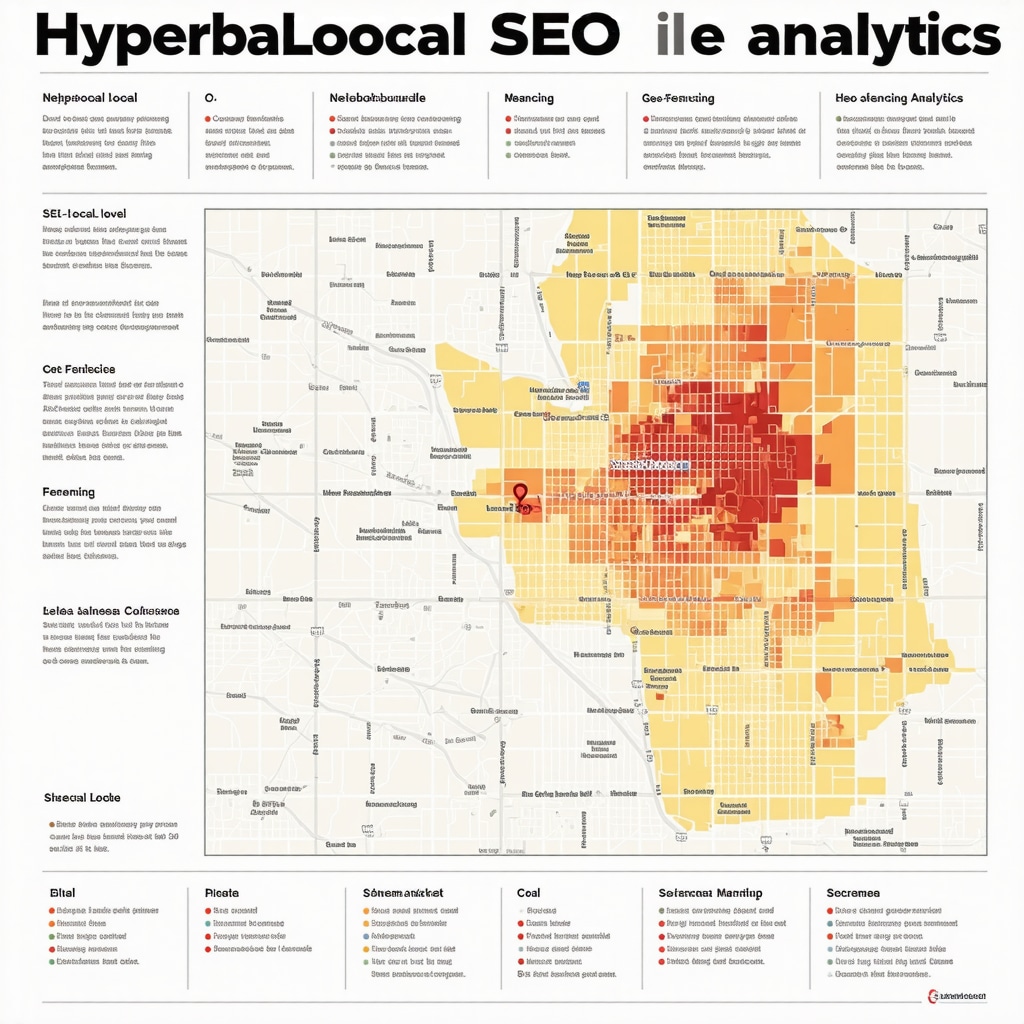
Frequently Asked Questions (FAQ)
What exactly is hyperlocal SEO, and how does it differ from traditional local SEO?
Hyperlocal SEO focuses on optimizing your online presence for very specific neighborhoods, blocks, or micro-communities, rather than broader cities or regions targeted by traditional local SEO. This precision enhances relevance for consumers searching within immediate proximity, boosting visibility where it matters most.
How can I create content that truly resonates with my neighborhood audience?
Develop content that reflects your neighborhood’s unique culture, events, landmarks, and vernacular. Use localized keywords naturally, such as street names or community references, and incorporate user-generated content with geo-tags to foster authentic engagement and relevance.
Why is managing my Google Business Profile crucial for hyperlocal SEO success?
Your Google Business Profile acts as a digital storefront for hyperlocal searches. Regularly updating it with neighborhood-specific posts, photos, and promotions signals active local engagement to Google, enhancing your chances of appearing prominently in local packs and map results.
What role do local reviews play in improving hyperlocal search rankings?
Local reviews with detailed, location-specific mentions provide valuable contextual signals to search engines about your business’s exact service area and quality. Encouraging customers to include neighborhood details in their reviews enriches your keyword diversity and trustworthiness, positively impacting rankings.
How can advanced structured data markup improve my hyperlocal SEO performance?
Implementing advanced Schema.org markup—such as LocalBusiness, Event, Service, and Review schemas with precise geocoordinates—enables search engines to better understand your business’s local context. This enhances rich snippet eligibility and visibility in local 3-pack results, increasing click-through rates.
Which analytics tools offer the best insights for tracking hyperlocal SEO effectiveness?
While Google Analytics and Search Console provide foundational data, specialized tools like SEMrush Position Tracking and BrightLocal offer granular neighborhood-level tracking, citation audits, and review sentiment analysis. These enable precise optimization based on micro-community performance.
How do geo-fencing and hyperlocal PPC campaigns complement organic hyperlocal SEO?
Geo-fencing allows you to target ads within defined neighborhood boundaries, maximizing ad relevance and ROI. When combined with hyperlocal PPC campaigns using neighborhood-specific keywords and event references, these paid strategies synergize with organic SEO efforts to amplify local brand presence.
Can hyperlocal SEO tactics help in highly competitive urban markets?
Absolutely. By focusing on micro-community nuances ignored by broader campaigns, hyperlocal SEO enables small businesses to dominate niche areas, outshine competitors, and build strong neighborhood loyalty through tailored content, partnerships, and localized engagement.
How important is mobile optimization and voice search for hyperlocal SEO?
Extremely important. Mobile users often perform local searches on the go, and voice queries tend to be conversational and location-specific. Optimizing for mobile responsiveness and integrating natural language FAQs enhances user experience and increases your chances of capturing voice-driven local traffic.
What ongoing strategies ensure lasting hyperlocal SEO success?
Continuous content updates reflecting neighborhood changes, active management of Google Business Profile, monitoring and responding to reviews, leveraging local partnerships for backlinks, and regularly auditing structured data and analytics are essential to maintain and grow hyperlocal authority over time.
Trusted External Sources
- Moz Local SEO Guide: Offers comprehensive insights on local search ranking factors, emphasizing the importance of proximity and hyperlocal relevance in SEO strategy.
- Search Engine Land Local SEO Guide: Provides expert analysis on evolving local search trends, including the critical role of reviews and hyperlocal content in search engine algorithms.
- Google Developers Structured Data Documentation: Detailed guidelines on implementing advanced Schema.org markup for local businesses to enhance rich results and local visibility.
- BrightLocal Research and Tools: Specialized platform for hyperlocal SEO reporting, citation management, and review analysis, enabling granular neighborhood-level insights.
- SEMrush Position Tracking: Advanced tool for tracking keyword rankings with geographic precision, essential for monitoring hyperlocal SEO performance.
Conclusion
Mastering hyperlocal SEO requires a focused and nuanced approach that transcends traditional local optimization by zooming into the intricacies of micro-communities and neighborhoods. By crafting tailored content, leveraging Google Business Profile strategically, managing location-rich reviews, and employing advanced technical tactics like structured data and geo-fencing, businesses can secure dominant visibility in their immediate locales. Integrating precise analytics tools empowers continuous refinement of strategies, ensuring responsiveness to evolving local search behaviors and consumer intent. Embracing hyperlocal SEO not only drives targeted traffic but also fosters authentic community connections, transforming local businesses into neighborhood authorities. Ready to amplify your local presence? Share your insights, ask questions, and explore further expert resources to stay ahead in the dynamic world of hyperlocal search optimization.
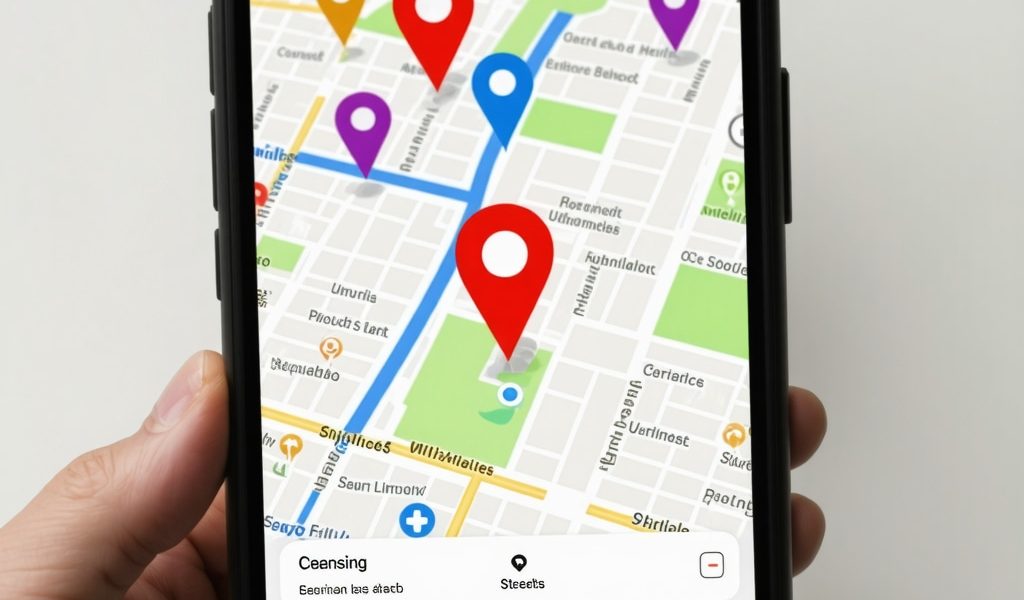
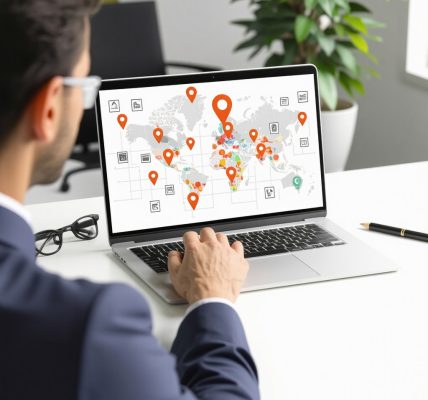
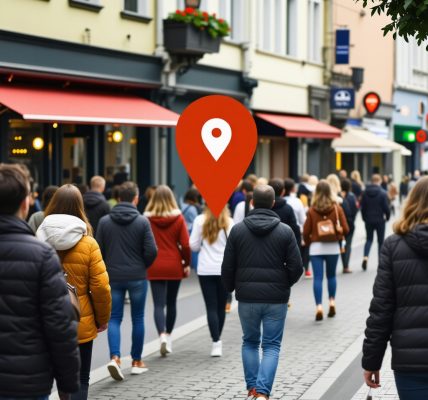

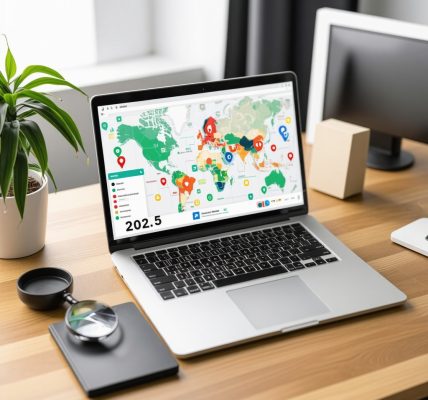
The in-depth exploration of hyperlocal SEO here really highlights how crucial it is for businesses to focus on micro-community engagement rather than just broad city-wide terms. From my experience managing a local bookstore, creating content that celebrates neighborhood events and landmarks not only increased our web traffic from residents but also improved foot traffic significantly. What really resonated was the idea of encouraging customers to include specific street names or districts in their reviews—that localized detail seems to add a layer of authenticity that Google actually rewards. I’m also intrigued by the integration of advanced schema markup to boost visibility through rich snippets; it’s a tactic we haven’t fully utilized yet but sounds promising for increasing click-through rates. However, I wonder how small businesses with limited technical resources can effectively implement these advanced structured data strategies without overextending? Are there simplified tools or services that give manageable access to such technical optimizations? It would be great to hear how others have balanced these technical demands with daily operations, ensuring their hyperlocal SEO remains both effective and sustainable over time.
Lindsay, your points about localized reviews and schema markup really struck a chord with me. From my own experience working with a small landscaping business, we’ve found that while the technical side of advanced structured data seemed daunting at first, tools like Google’s Structured Data Markup Helper and plugins such as Yoast SEO can simplify the process significantly. These tools allow even those without extensive coding knowledge to implement essential schema on their sites effectively. Moreover, starting with basic LocalBusiness markup and gradually adding more specific schema types, like Event or Review, can prevent feeling overwhelmed. It’s also helpful to periodically audit your structured data using Google’s Rich Results Test and Search Console to catch errors early. Balancing everyday operations with SEO upkeep is challenging but manageable when team members are assigned small, focused tasks like updating GBP posts or encouraging customers for location-specific reviews. Have any others found effective ways to distribute these responsibilities within their teams so that technical SEO doesn’t become a bottleneck? I’m curious about strategies used by other small businesses to maintain consistent hyperlocal SEO efforts without requiring dedicated full-time SEO professionals.
Building on the discussion about advanced structured data and hyperlocal reviews, I’ve observed that engaging directly with customers to encourage detailed, location-specific feedback can exponentially benefit local rankings. For instance, a small bakery I consulted for began adding a simple prompt on receipts asking patrons to mention their neighborhood and favorite local landmarks in reviews, which noticeably improved their hyperlocal relevance in search results over a few months. Regarding Lindsay’s concern about balancing technical demands, leveraging SEO agencies or freelancers focused specifically on local SEO can lighten the load. They often provide tailored packages that cover schema markup implementation and ongoing profile optimizations, allowing small businesses to maintain focus on daily operations. Additionally, some platforms like BrightLocal offer user-friendly dashboards that provide actionable insights without requiring deep technical expertise. To keep things sustainable, I suggest designating a team member as the ‘local SEO champion’ who handles routine updates and customer engagement, while more complex technical work can be outsourced or scheduled periodically. For others who have managed these challenges, how have you structured your teams or resources to maintain consistent yet manageable hyperlocal SEO efforts? Have you found particular tools or workflows especially helpful?
I really appreciate the emphasis on creating neighborhood-specific content in this post. From my experience managing a small coffee shop in Atlanta, I found that engaging with local events and landmarks not only boosts SEO signals but also fosters a genuine community connection. We started featuring weekly blog posts about nearby parks, cultural festivals, and even spotlighting local artists, which resonated well with our customers. The part about leveraging GBP features like posts and Q&A is particularly useful, as it keeps the business active and connected to the community. My question is, how can smaller businesses without dedicated content teams efficiently maintain this hyperlocal content creation without it becoming overwhelming? Are there scalable approaches or tools that you’ve seen work effectively to keep content fresh and locally relevant in such fast-paced environments? I believe that consistent engagement on these fronts can really elevate local visibility and build loyalty in tight-knit neighborhoods.
This post hits all the right notes about the importance of hyperlocal SEO! I’ve seen firsthand how tailoring content for micro-communities can dramatically boost visibility. For instance, I manage a boutique in Austin, and by creating neighborhood-centric blog posts and encouraging local reviews mentioning specific streets and landmarks, we’ve noticed a tangible increase in local foot traffic and online engagement. The emphasis on structured data schema and geo-fencing really caught my attention—these technical strategies can seem complex, but I believe with the right tools, even small teams can implement them effectively. What are some user-friendly, budget-friendly tools or platforms you recommend for small businesses just starting with advanced schema markup and geo-targeted marketing? Also, I’d love to hear about creative ways small local businesses are maintaining fresh, relevant content without stretching their resources too thin. It’s inspiring to see how hyperlocal tactics can truly position a business as a neighborhood leader. Looking forward to hearing more innovative strategies from the community!